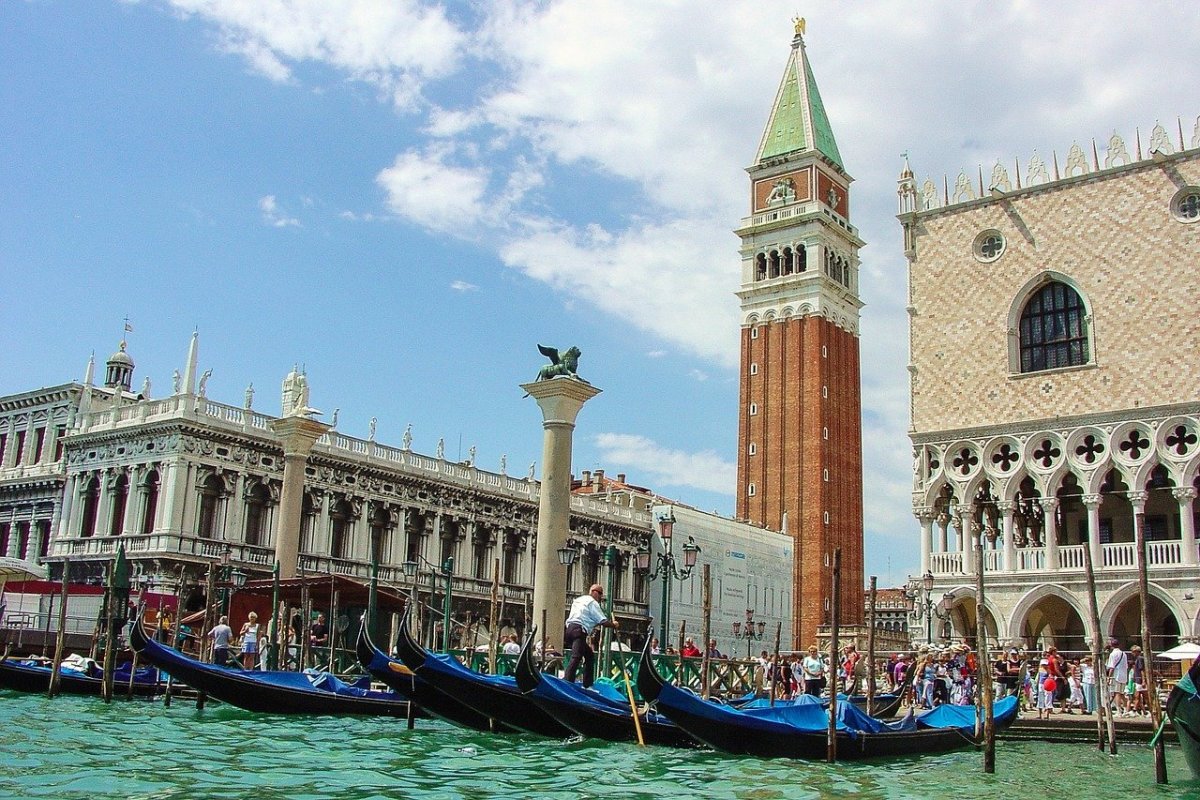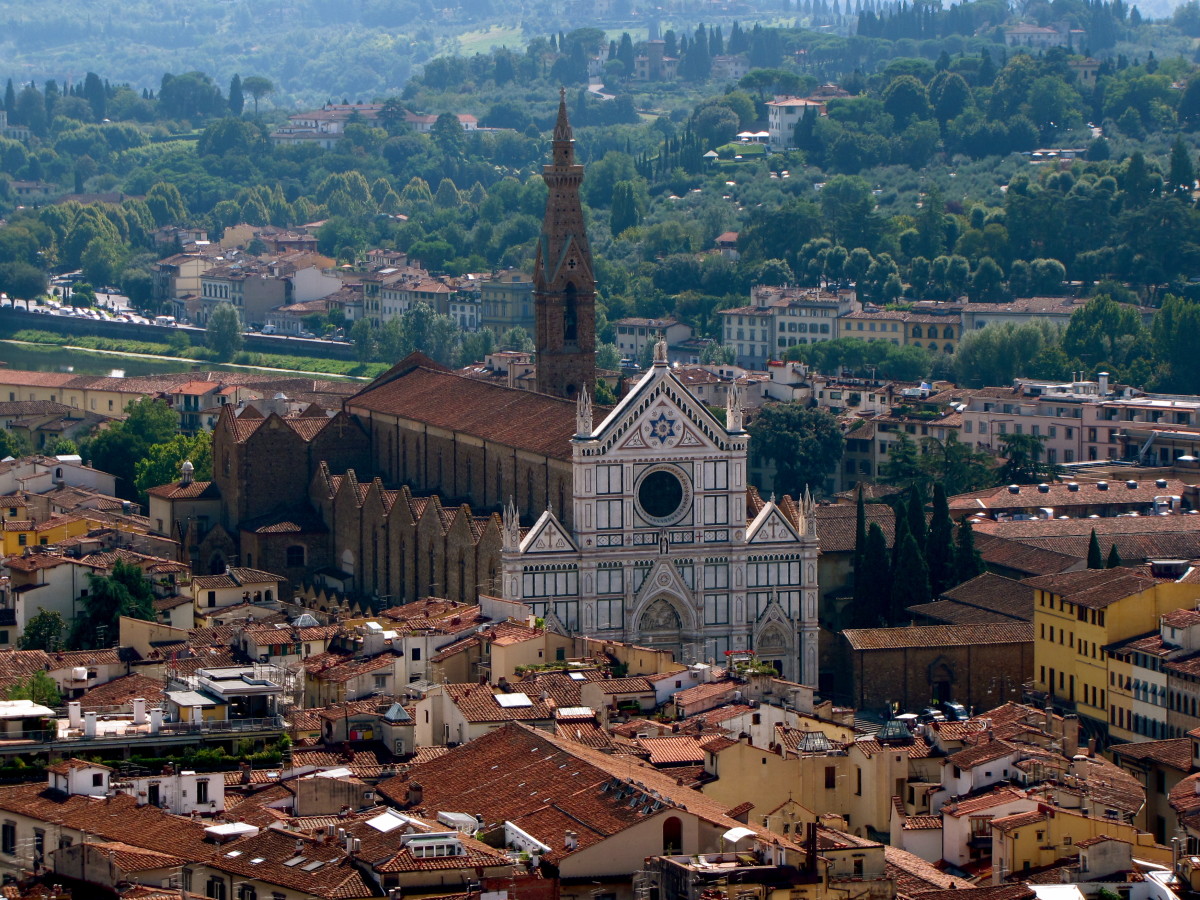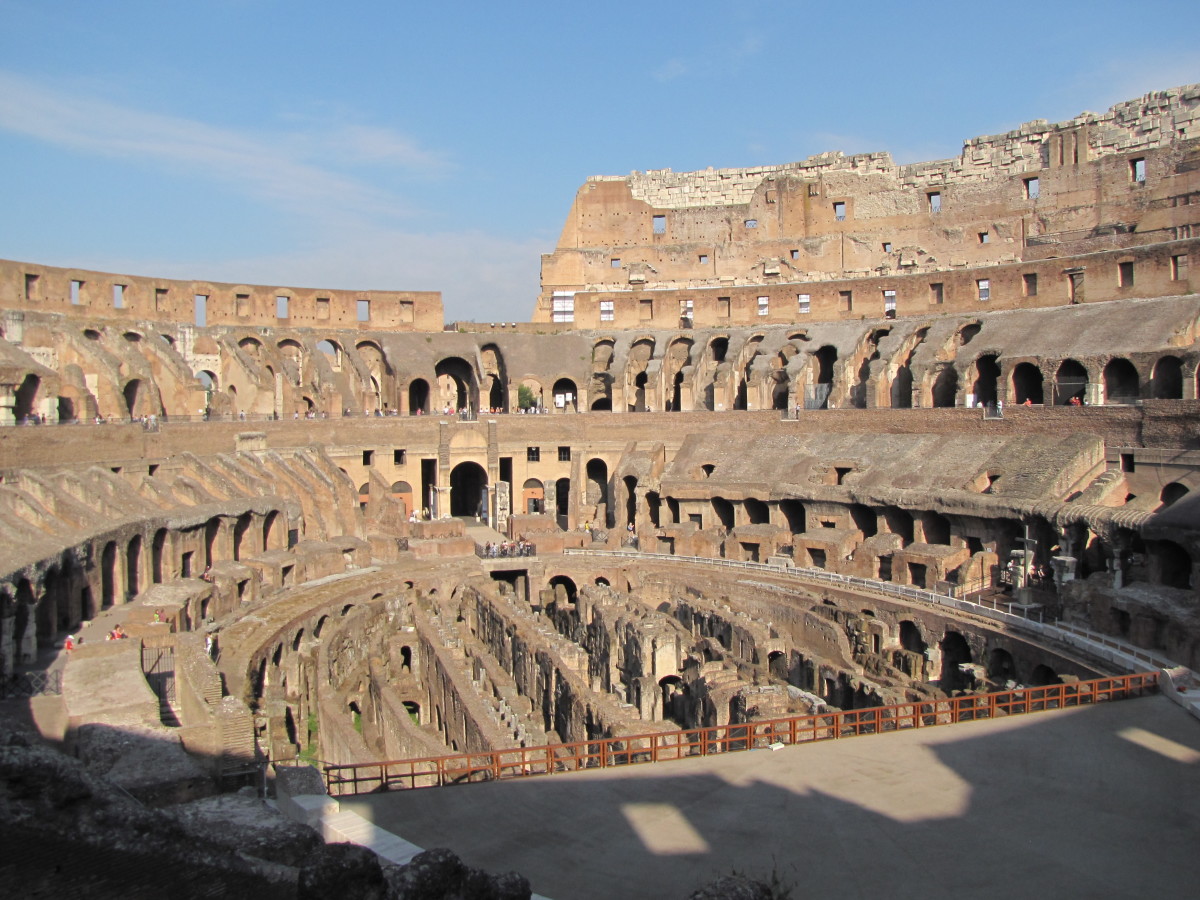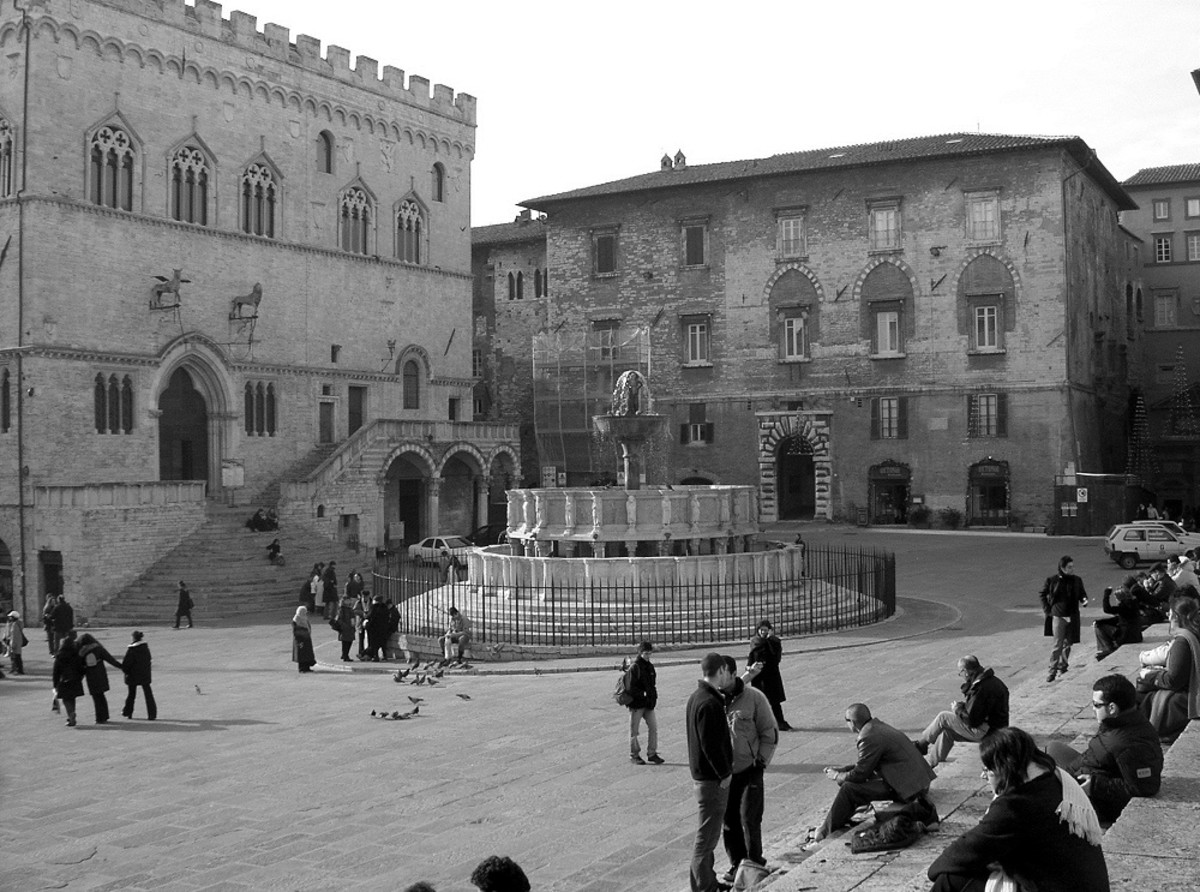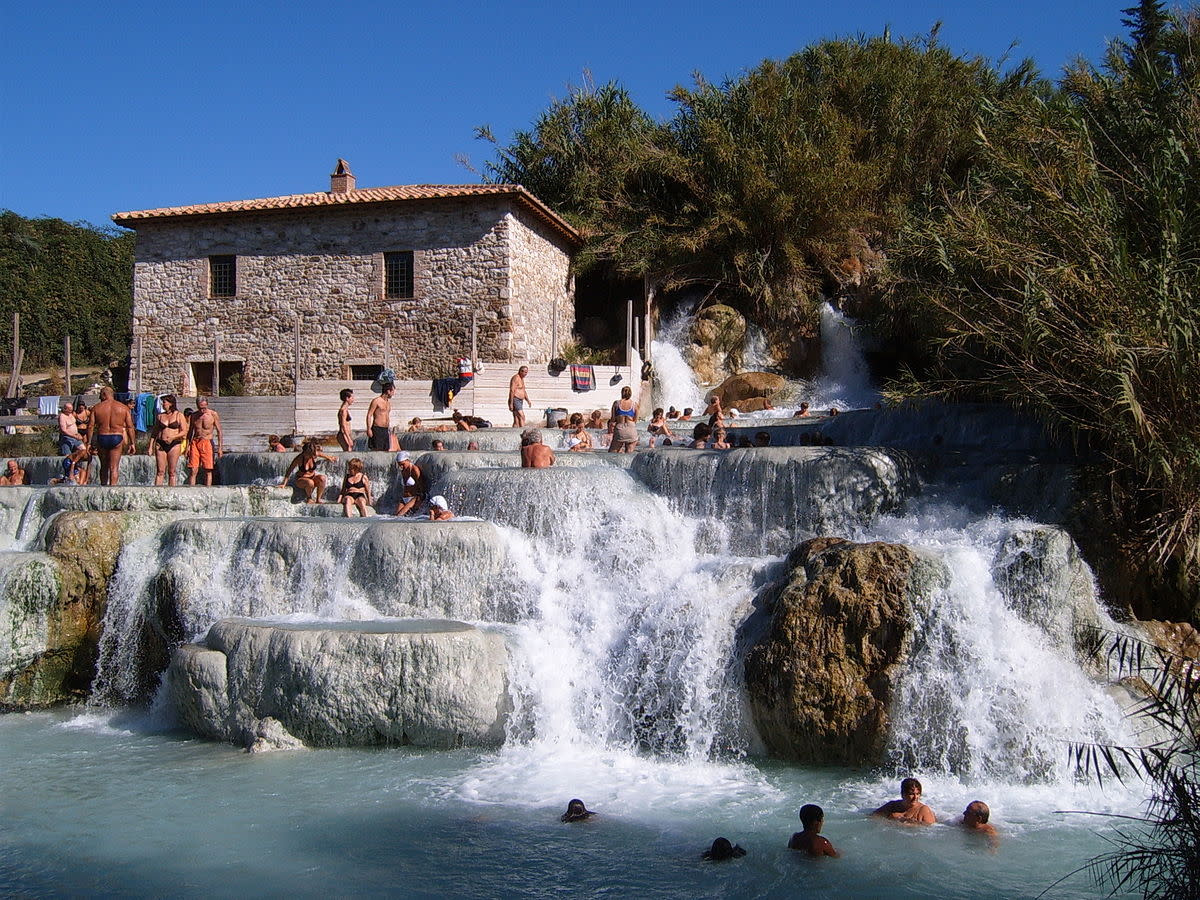Rome is a world - some poems and vintage postcards about the city in Italy
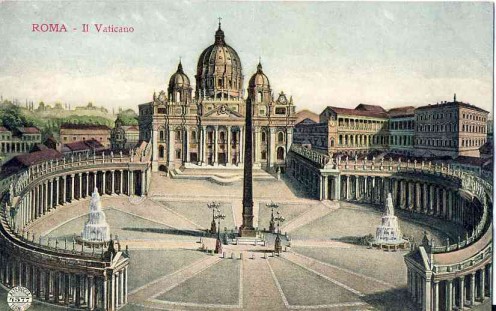
Some poems about Rome
"Rome is a world, and it would take years to become a true citizen of it." - Johann Wolfgang von Goethe: Letters from Italy, 23 December 1786.
NEAR ROME, IN SIGHT OF ST. PETER'S
LONG has the dew been dried on tree and lawn:
O'er man and beast a not unwelcome boon
Is shed, the languor of approaching noon;
To shady rest withdrawing or withdrawn
Mute are all creatures, as this couchant fawn,
Save insect-swarms that hum in air afloat,
Save that the Cock is crowing, a shrill note,
Startling and shrill as that which roused the dawn.
--Heard in that hour, or when, as now, the nerve
Shrinks from the note as from a mistimed thing,
Oft for a holy warning may it serve,
Charged with remembrance of 'his' sudden sting,
His bitter tears, whose name the Papal Chair
And yon resplendent Church are proud to bear.- From "Memorials of a Tour in Italy" by William Wordsworth (1837)
Roma, Roma, at thy feet
I lay this barren gift of song!
For, ah! the way is steep and long
That leads unto thy sacred street. - from "Rome Unvisited" by Oscar Wilde (1881)
"Rome" by Osip Mandelstam
Rome is but nature's twin, which has reflected Rome.
We see its civic might, the signs of its decorum
In the transparent air, the firmament's blue dome,
The colonnades of groves and in the meadow's forum.
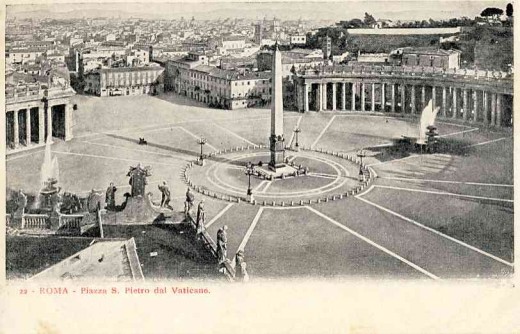
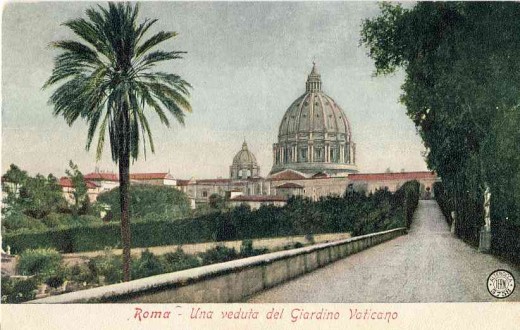
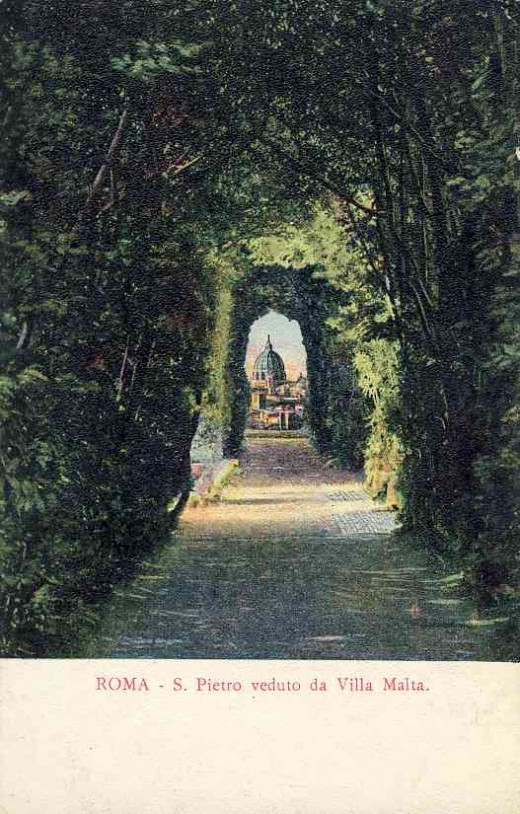
St Peter's Basilica
"St Peter's has made me realise that Art, like Nature, can abolish all standards of measurement." Johann Wolfgang von Goethe, Letters from Italy, 9 November 1786.
Built on a site which has had a Christian Church on it since the 4th Century, St Peter's Basilica, or, to give it its proper title, the Papal Basilica of St Peter, is probably the largest church in the world, being able to hold up to 60 000 people.
Tradition holds that it is built on the site of the grave of St Peter, an Apostle and first Bishop of Rome. It is situated in the Vatican City, on the west bank of the Tiber River.
The foundation stone of the present basilica was laid in 1506. The great dome was completed in 1590 with this inscription running around its base:
"Tv es Petrvs et svper hanc petram aedificabo ecclesiam meam. Tibi dabo claves regni caelorvm"
("...you are Peter, and on this rock I will build my church. ... I will give you the keys of the kingdom of heaven..." Vulgate, Matthew 16:18–19.)
The dome is 136.57 metres high, the highest in the world, and is the third largest in terms of internal diameter after the Pantheon and the Cathedral of Florence.
Work on the basilica continued for another 100 years or more, with scores of architects and other artists contributing to its magnificence.
The colonnade around St Peter's Square was designed by Bernini, as were the two fountains in the square. The obelisk in the middle of the piazza is from Egypt and dates to the 13th Century BCE. It was brought to Rome by Nero and erected in the Circus of Nero in the first century of the Common Era.
In 1586 Pope Sixtus V ordered that it be removed to the piazza where it was placed centrally to the facade of the basilica. Bernini designed the features of the piazza around the obelisk.
Some of the great names associated with the design and construction of St Peter's Basilica are Michelangelo, Raphael, Donato Bramante, Gianlorenzo Bernini, Leonard da Vinci and Giacomo della Porta.
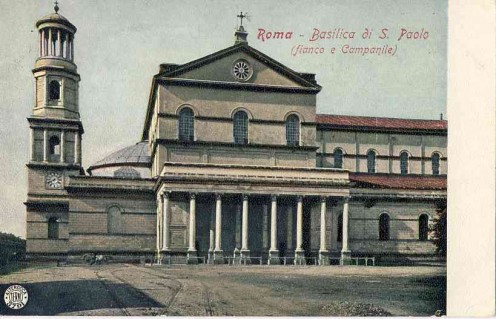
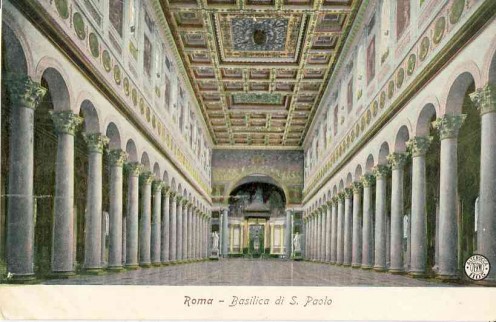
Basilica Papale di San Paolo fuori le Mura
One of the four Papal Basilicas of Rome, this church was founded by the Emperor Constantine. It is positioned over the burial site of St Paul, whose alleged remains have been found in a crypt below the altar.
The building of the original basilica was started by the Emperor Theodosius in 386 and completed in the 5th Century CE during the Papacy of Leo I.
The building was extensively modified in the early 7th Century, during which modifications the altar was placed directly over the tomb of St Paul.
Because of its location outside the Aurelian Walls the basilica was damaged during the 9th Century Saracen invasions.
The basilica was almost totally destroyed by a fire which broke out on 15 July 1823 and so the existing building, including the nave with its 80 columns, is from the 19th Century.
The original basilica had existed unchanged for almost one-and-a-half millenia, until that fateful fire.
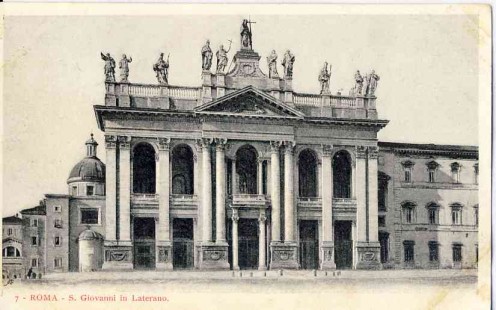
San Giovanni in Laterano
This magnificent basilica is the oldest and first in rank of the four papal basilicas, the fourth being the basilica of St Mary Maggiore.
St John Lateran is first in rank as it is the seat of the Bishop of Rome, who is the Pope.
The façade shown in this postcard ws designed by Alessandro Galilei and completed in 1735. The church itself has undergone numerous reconstructions due to calamities that have befallen it since its first construction in the Fourth Century, including earthquakes, fires and plundering.
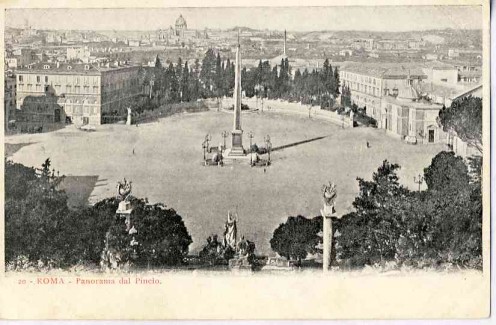
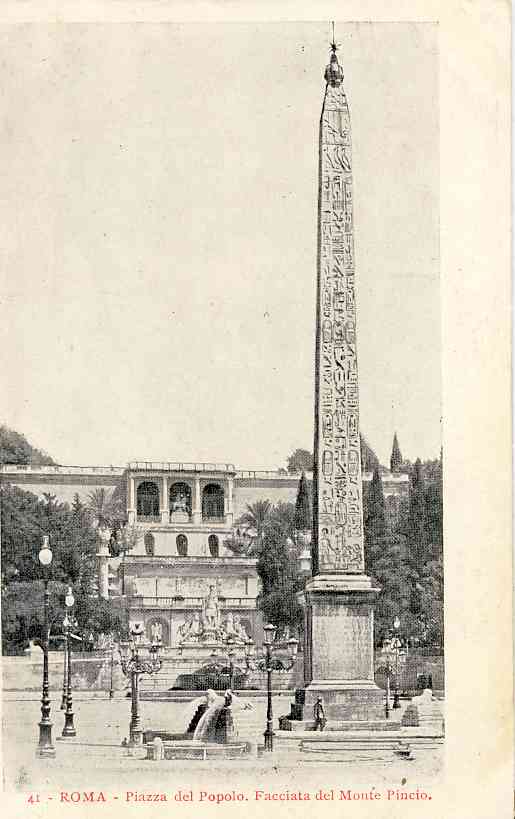
The Piazza del Popolo
I SAW far off the dark top of a Pine
Look like a cloud--a slender stem the tie
That bound it to its native earth--poised high
'Mid evening hues, along the horizon line,
Striving in peace each other to outshine.
But when I learned the Tree was living there,
Saved from the sordid axe by Beaumont's care,
Oh, what a gush of tenderness was mine!
The rescued Pine-Tree, with its sky so bright
And cloud-like beauty, rich in thoughts of home,
Death-parted friends, and days too swift in flight,
Supplanted the whole majesty of Rome
(Then first apparent from the Pincian Height)
Crowned with St. Peter's everlasting Dome.- from Memorials of a Trip to Italy by William Wordsworth.
The Piazza del Popolo in its present form was designed by architect Giuseppe Valadier and built between 1811 and 1822.
The obelisk in the centre of the piazza is the second oldest in Rome. It was originally erected in Heliopolis by Rameses II and was brought to Rome in 10 BCE by the Emperor Augustus and set up in the Circus Maximus. It was brought to its present location by Pope Sixtus V in 1589.
As mentioned in Wordsworth's sonnet, the dome of St Peter's can be seen across the piazza from the Pincio hill.

The Pyramid of Cestius
Who, then, was Cestius,
And what is he to me? -
Amid thick thoughts and memories multitudinous
One thought alone brings he.
I can recall no word
Of anything he did;
For me he is a man who died and was interred
To leave a pyramid
Whose purpose was exprest
Not with its first design,
Nor till, far down in Time, beside it found their rest
Two countrymen of mine.
Cestius in life, maybe,
Slew, breathed out threatening;
I know not. This I know: in death all silently
He does a kindlier thing,
In beckoning pilgrim feet
With marble finger high
To where, by shadowy wall and history-haunted street,
Those matchless singers lie . . .
--Say, then, he lived and died
That stones which bear his name
Should mark, through Time, where two immortal Shades abide;
It is an ample fame.
- from "Rome at the Pyramid of Cestius near the graves of Shelley and Keats" by Thomas Hardy
Hardy might not (or might well have) known who Caius Cestius was. No matter. Cestius was a magistrate in Rome and the pyramid was built to house his remains after his death. The construction of the pyramid took place between 18 and 12 BCE and at the time it would have been outside of the city.
In his poem"Adonais" Shelley described the pyramid as "one keen pyramid with wedge sublime".
Hardy visited the Protestant Cemetery where Shelley and Keats were buried which is nearby in 1887.

"Three coins in a fountain"
OK - so this is not that fountain! This is a 17th Century fountain by that great decorator of Rome, Gianlorenzo Bernini, who was asked to capture the essence of the triumphant poem by Ovid (from Metamorphoses Book I):
Already Triton, at his call, appears
Above the waves; a Tyrian robe he wears;
And in his hand a crooked trumpet bears.
The sovereign bids him peaceful sounds inspire,
And give the waves the signal to retire.
His writhen shell he takes; whose narrow vent
Grows by degrees into a large extent,
Then gives it breath; the blast with doubling sound,
Runs the wide circuit of the world around:
The sun first heard it, in his early east,
And met the rattling echos in the west.
The waters, list'ning to the trumpet's roar,
Obey the summons, and forsake the shore. —free translation by Sir Samuel Garth, John Dryden, et al..
This fountain is in the Piazza Barberini and was built during the years 1642 to 1643. The "crooked trumpet" which the Triton holds is a conch shell!
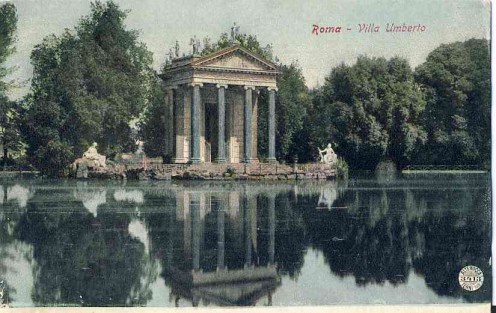
Villa Umberto
Located in the gardens of the Villa Borghese on the Pincian Hill, this "Temple of Aesculapius" is also called the Villa Umberto. It is a landscape feature rather than a real "Temple" or "Villa."
The Temple was modeled in the 19th Century on a similar one on the lake at Stourhead, Wiltshire, England.
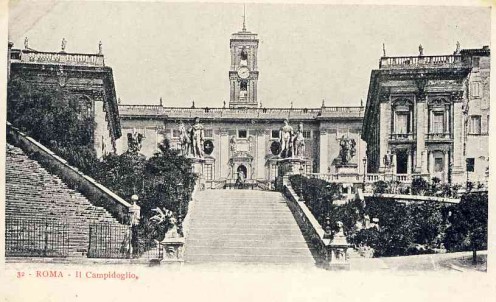
Il Campidoglio
The Capitoline Hill, one of the seven on which Rome was originally built, is topped by the Palazzo Senatorio. In this picture the steps (cordonata) designed by Michaelangelo. The balustrade has two Egyptian lions in black basalt at the bottom and huge statues of the twins Castor and Pollux at the top. The stairway leads up to the piazza on the Hill also designed by Michaelangelo.
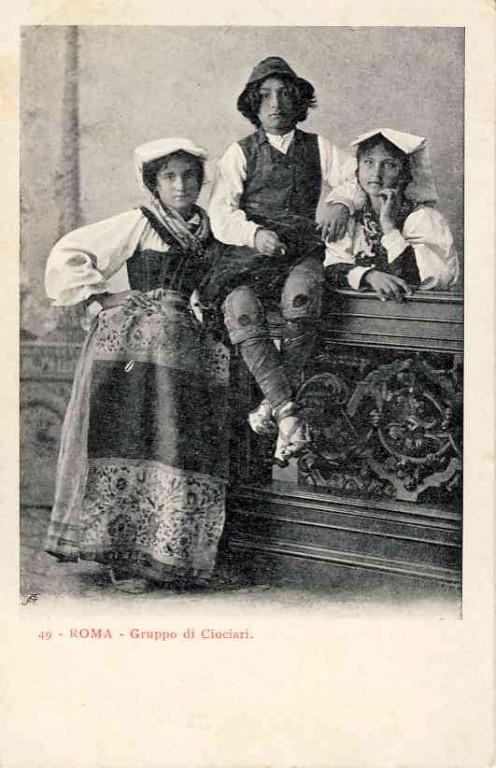
Ciociaria
An interesting postcard is this one, showing a group of Ciociari, the name used for people of the area in central Italy known as the Campagna. The name is derived from the type of footwear worn by people in the area in ancient times, and still worn by some shepherds in the Central Appenines. These open sandals are called ciocie.
The man in the centre of the postcard is wearing ciocie.
The Alberto Moravia novel La ciociara tells of tragic events in the area after World War II. The Vittorio de Sica movie "Two Women" starring Sophia Loren and Jean-Paul Belmondo is based on the novel.
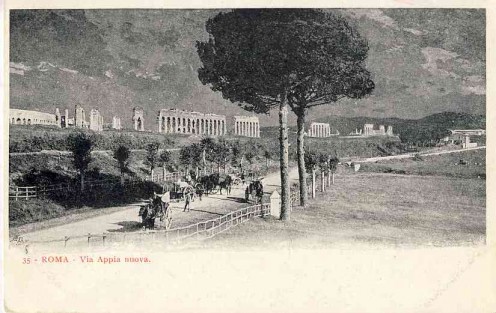
Via Appia Nuova
Ancient Rome was noted for the roads it built for strategic and military purposes. One of the most impressive and important of these was the Via Appia, named after the Consul Appius Claudius Caecus. The road was started by him as a link to the south of Rome in 312 BCE, during the Samnite Wars.
After the fall of the Western Empire the Appian Way (Appia teritur regina longarum viarum "the Appian way is commonly said to be the queen of the long roads") fell into disrepair.
In 1784 Pope Pius VI wanted to restore the Appian Way and a new section was built parallel to the old road as far as the Alban Hills. This road became known as the Via Appia Nuova as opposed to the Via Appia Antica.
Finis
Rome is a world which cannot be encapsulated in a few postcards, nor can one learn all there is to know about this great city in a few short paragraphs.
Nor can one even capture the feel or soul of the city in a few poetic fragments, however beautiful.
I just hope you have enjoyed this all too brief journey through the Eternal City as shown in these old postcards and some related poems, which both have their own charm.
Copyright Notice
The text and all images on this page, unless otherwise indicated, are by Tony McGregor who hereby asserts his copyright on the material. Should you wish to use any of the text or images feel free to do so with proper attribution and, if possible, a link back to this page. Thank you.
© Tony McGregor 2010

